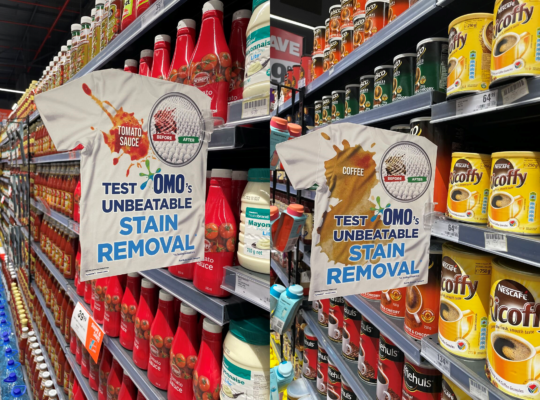 My last post argued that often (though not always the case) the role of shopper marketing is to disrupt shopper behavior. This is critical to shopper marketing success: if the shopper doesn’t behave differently, it is unlikely that our results will change. Most marketers I know are looking for growth: and growth means that some shoppers at least must change their behavior. Different shoppers, in different channels, all behaving different. Every situation is different. We also know that a huge amount of in-store investment is wasted. So how is a shopper marketer to know which activity to focus on to make their shopper marketing effective? Loads of people asked how best to plan, so here (in as much detail as I can cover in a short blog post) is how to tune your shopper marketing activity to have the best chances of changing shopper behavior in a way that works for you and your brand.
My last post argued that often (though not always the case) the role of shopper marketing is to disrupt shopper behavior. This is critical to shopper marketing success: if the shopper doesn’t behave differently, it is unlikely that our results will change. Most marketers I know are looking for growth: and growth means that some shoppers at least must change their behavior. Different shoppers, in different channels, all behaving different. Every situation is different. We also know that a huge amount of in-store investment is wasted. So how is a shopper marketer to know which activity to focus on to make their shopper marketing effective? Loads of people asked how best to plan, so here (in as much detail as I can cover in a short blog post) is how to tune your shopper marketing activity to have the best chances of changing shopper behavior in a way that works for you and your brand.
Who is the target shopper?
I’ve discussed the target shopper this at length before. In any marketing situation, we are not interested in everyone. A consumer marketer isn’t interested in all their consumers. In the same way, a shopper marketer isn’t interested in all shoppers. We are interested in a specific group of shoppers – our target shoppers. These shoppers are the ones that are critical to us achieving our objectives.
What is the current in-store behavior of the target shopper?
The starting point of any behaviorally based shopper marketing is to really understand the current behavior of the target shopper. Where do they shop, where in the store do they go? What do they look at, what do they notice? What do they touch, smell, read?
What will happen if I do nothing (and will that help me hit my objectives?)
This might seem like a pretty simple step, but it is worth some thought. At one level, if we do nothing, the shopper is likely to continue to do what they currently do, right? First things first, are we happy with their current behavior? Are they, for example, buying our brand? Are they buying enough? And most critically, if they don’t change their behavior, will we hit our targets? If not, we either need a new target shopper, or we need to change their behavior!
What do I really want the shopper to do in-store?
Assuming that we do need them to change their behavior, the next question is obvious – what do we want them to do? Are we trying to get shoppers who have never tried the category to try it? Are we trying to get competitor shoppers to try our brand? Infrequent shoppers to buy more frequently? Or a shopper who usually buys one pack, to buy two? I hope you can see that a really clear and focused understanding of who the target shopper is, and what is their current behavior, is key to this step.
Is there any evidence that the shopper might be prepared to do that?
Before we get too excited, it’s time to check whether this is realistic. What do we know that suggests that the shopper might do this? On the contrary is there any evidence to suggest that the desired behavior is a stretch. To be clear, I’m not looking for a cast iron case to prove the shopper will definitely do it: that I find is too constricting and kills off some of the best ideas. What we’re looking for here is enough support to suggest that the behavioral change is at least credible.
What activities are most likely to encourage the desired behavior in the target shopper?
We are now clear on the behavior we want to encourage: the next step is to decide which activity to deploy. We can use previous activity evaluations and any shopper research we may have to support this. If you don’t have either, then it is time to start evaluating activities! But, if you genuinely don’t have much data, then go with your gut! What makes sense? What feels right? And then – evaluate
Will those activities have a negative impact on other shoppers?
This is the only step in the process where we do need to think of the other shoppers. For our own sake, and that of our retail partners, we need to consider the impact of our activity on their behavior. Is it going to have a negative effect on other shoppers who currently buy our brand (but are not the target shoppers of this initiative?) Is it going to have a negative impact on brand perception? Will it have a negative impact on the overall category sales, in which case our retail chums are unlikely to be happy!
How much will this activity cost, and am I likely to get a return on investment from this activity?
The last step is to remember that shopper marketing activity is an investment, and we should seek to make a return on that investment. So we need to calculate how much the activity will cost; calculate the incremental profit that it will deliver, and that will enable us to ensure we are likely to deliver a positive return on investment.
At the heart of all of this is the need to build a better understanding of shoppers. If you haven’t started your shopper research journey yet, check out this free guide to conducting great shopper research. If you have some data, but are looking to squeeze some insight out of it, don’t worry: we’re writing an e-book on shopper insight right now! Click here to be notified when it’s ready!






